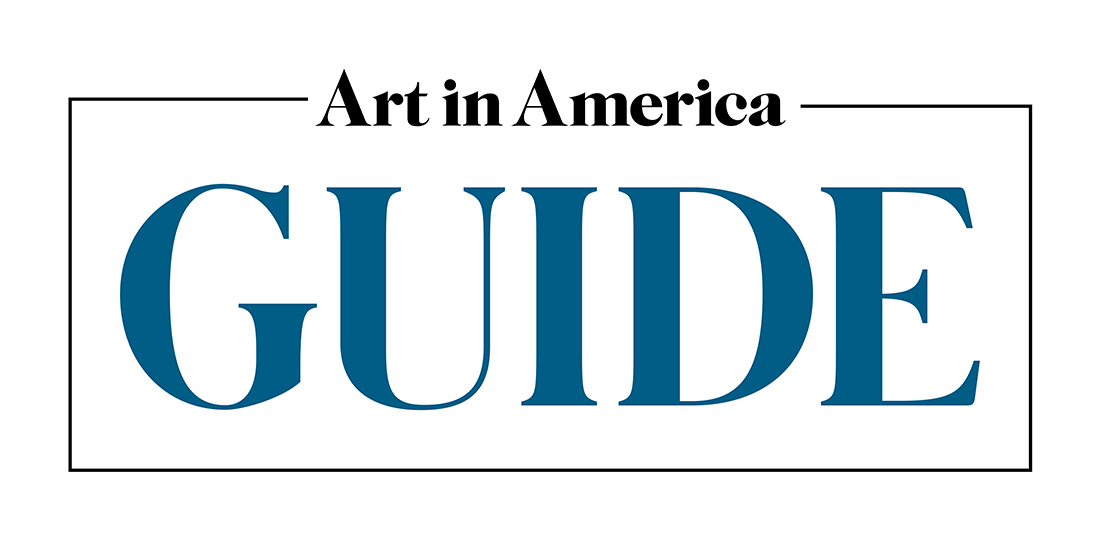
- This event has passed.
Viewing Room | Noland: Flares
March 12, 2020 - April 25, 2020

Kenneth Noland’s Flares, employing colorful and translucent plexiglass strips wedged between irregularly shaped panels, are the outcome of the artist’s rigorous and daring lifelong exploration of painting’s many possibilities.
Image:
Kenneth Noland, Flares: Away, 1991, acrylic on canvas on panel, 85-1/8″ × 32″ × 1-1/4″ (216.2 cm × 81.3 cm × 3.2 cm) © The Kenneth Noland Foundation / Artists Rights Society (ARS), New York
In the late 1950s, Noland broke with Abstract Expressionism’s gestural aesthetic. Staining unprimed canvas with acrylic, he produced paintings with stark geometric shapes and bold color contrasts, becoming one of the pioneers of Color Field painting and the Washington Color School. Groundbreaking series, such as his Circle or Chevron works, were systematic yet intuitive investigations of painting’s visual elements, especially color and shape. Eminent critics and artists soon lauded Noland’s work, with Donald Judd affirming in 1965, “by now Kenneth Noland’s salience isn’t debatable; he’s one of the best painters.”
Noland’s command over his medium only grew in the following decades. So did his ingenuity. “I believe in working and not . . . repeating that way of working as an image or as a style,” he stated, stressing, “It’s the learning, it’s the seeing something new evolve . . . out of various trial and error methods, fooling with stuff and taking chances on it not working.” Noland had adopted this hands-on, empirical approach from his close friend David Smith who in Noland’s eyes was relentlessly “involved in the nature of work.” The Flares are the outcome of this rigorous and daring lifelong exploration of painting’s many possibilities.
One of the Flares’ chief innovations resides in their colorful and translucent plexiglass strips. Wedged between the irregularly shaped panels of each work, these glossy bands activate a complex interplay among color, materials and form. To Noland, the Flares were “constructed pictures” with “separate component parts.” This assembling makes them related to both collage and sculpture, generating new possibilities. Realizing that color was inherent to plexiglass, Noland stated, “I can now make up, find different kinds of materials to use that I can assimilate as color—pieces of color.” He, in fact, further enhanced the objecthood of the Flares by painting their sides in colors that do not match their frontal surfaces. These edges, in turn, require that the works be viewed as three-dimensional objects.
Noland was attracted to the transparency of plexiglass, which, according to him, amplified the emotional resonance and material presence of color. “The slight difference of transparency in colors can be the difference of a thousand pounds of actual material,” he observed, “a matte color and a shiny, transparent color are emotionally different…there’s an expressive difference you can get [with transparency] that gives you more expressive range.” In Grace Black (1991/1995), for example, austere black panels are set ablaze by the glowing red of the work’s plexiglass strips. The work therefore oscillates between sobriety and vivacity—a capacious affective scale. Though Noland subsequently reworked some of his Flares in his Vermont studio, they were created while he resided in Santa Barbara, where nature, specifically the changing light and colors of the landscape, continuously inspired him, according to William Agee. In a horizontal work such as Rise and Fall (1991), predominantly warm hues, punctured by a vanishing sliver of blue plexiglass, evoke the atmospheric effects of the sky at sunset. With its title suggesting the arc of the sun, Rise and Fall thus delivers the full chromatic poignancy of the Pacific coast at dusk.
Noland’s interest in the triangulation between color, materials, and form can be traced back to his education at Black Mountain College, located in his hometown of Asheville, North Carolina. There his teacher Josef Albers experimented with glass and other nontraditional materials to examine what he called matière, that is, “how a substance looks” under different conditions. Noland’s collaboration with architect I.M. Pei was another important precedent. For the Weisner Building at MIT, they created in 1985 a mural integrating art and architecture. In this work as with the Flares, the recesses between flat planes are filled with color. Consequently, a dynamic, optical relationship links surface and edge. “The idea of using the interstices kind of jelled around that idea [of the MIT mural],” Noland recollected, “And I saw the possibility also of . . . hav[ing] the effect be that . . . the eye would be moved along by differences in color into various kinds of playful effects.” In this manner, the Flare series engages viewers in a prolonged game of looking—a journey into the artist’s radical reconfiguration of painting.
Pace’s online viewing rooms offer rich contextual lenses through which to engage with our artists’ work and exhibitions. To inquire about any of the works featured in this exhibition, please email inquiries@pacegallery.com.
We invite you to explore our other Viewing Rooms including Saul Steinberg: Imagined Interiors, James Turrell, Julian Schnabel: The Patch of Blue the Prisoner Calls the Sky, Paul Graham: The Seasons, Arlene Schechet: Skirts, and A Swiftly Tilting Planet.
